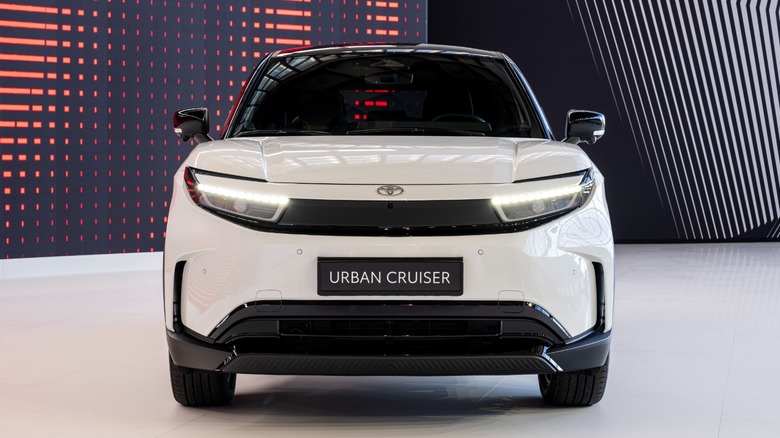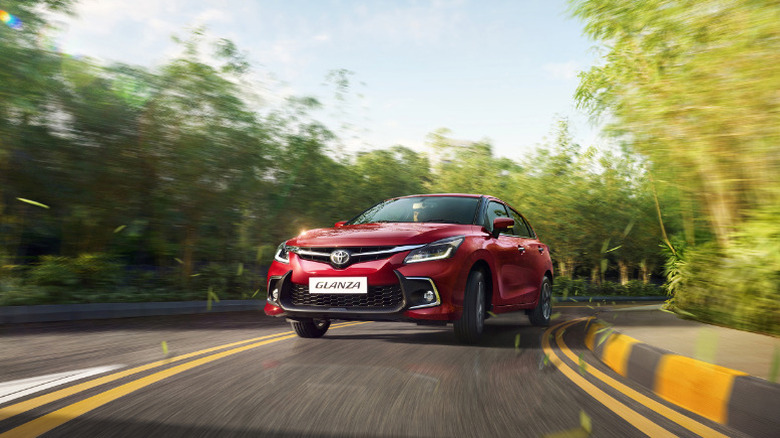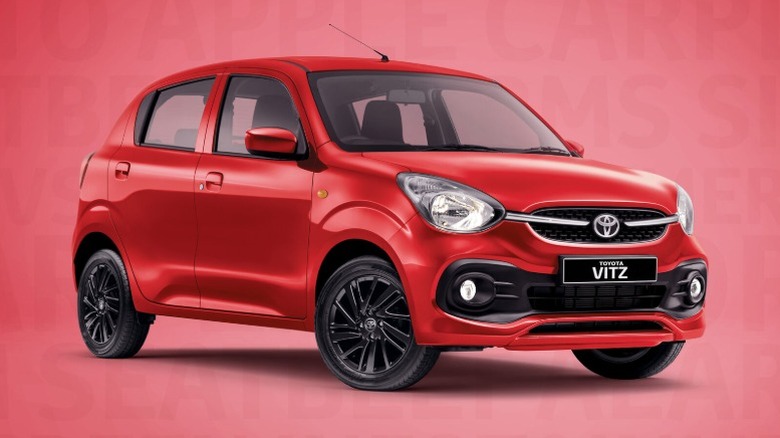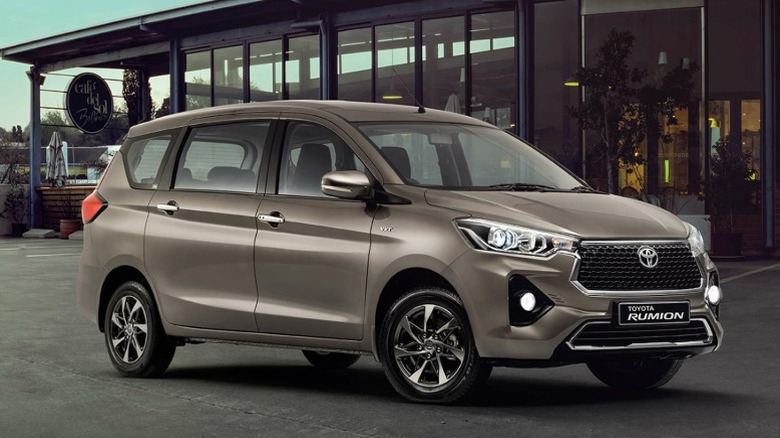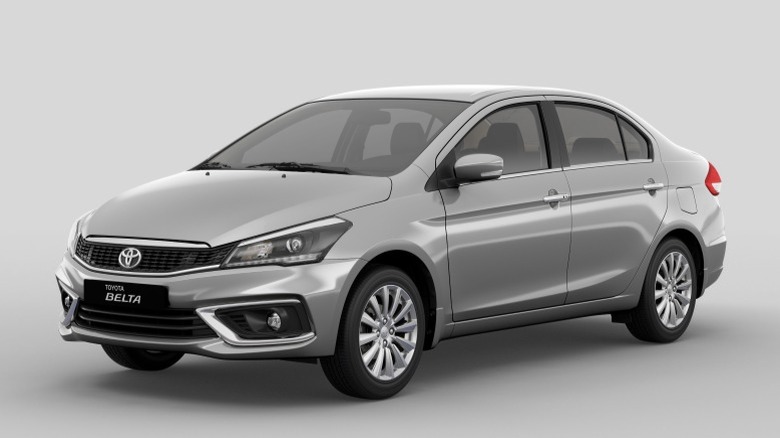5 Toyota Cars That Are Actually Suzuki Models
Badge engineering has been a part of the automotive industry for decades, with the practice responsible for great and terrible cars alike. You're probably familiar with badge-engineered American-market vehicles such as the 2004 Pontiac GTO (a rebadged Holden) or the fifth-generation Chevrolet Nova, which was a Toyota Corolla Sprinter with a Chevy badge. But the practice extends to markets all around the world, with Toyota's link-up with Suzuki just one example of its ubiquity.
Toyota and Suzuki first started working together in 2016, with the two firms announcing a capital alliance in 2019. The alliance meant that the two companies would share tech and vehicles, with Toyota providing its hybrid system and hybrid vehicles to Suzuki, with the smaller automaker providing Toyota with engines and OEM vehicles in return, the latter ready for any badge-engineering exercises Toyota may wish to undertake.
All of these OEM Suzuki vehicles come from Suzuki's Indian offshoot, Maruti Suzuki, a joint venture between Suzuki and the Indian government that produces ultra-cheap cars like the Maruti Suzuki Alto K10. As such, many of these Toyota-branded Suzukis aren't for the American market. Instead, these Toyotas are mostly present in India — where they make up 44% of Toyota's sales — as well as international markets such as South Africa. Some of these names may be familiar if you're a keen follower of Toyota's non-U.S. offerings, but the cars themselves will likely be unfamiliar.
Toyota Glanza and Starlet
One of the first fruits of the Toyota-Suzuki partnership was the Toyota Glanza. Debuting in 2019, this rebadged version of the Maruti Suzuki Baleno was a compact premium hatchback, which had first entered the Indian market in 2015. At its launch, the Baleno came with either an 83-hp 1.2-liter gas engine or a 74-hp 1.3-liter diesel; by the time Toyota released the Glanza, however, Suzuki had facelifted the Baleno and rejigged its engine offerings, dropping the diesel in favor of a 1.2-liter hybrid engine.
Toyota opted not to mess with the Baleno much, retaining all of the interior and exterior styling cues. The engines were predictably identical, too, with buyers able to choose between the same 1.2-liter gasoline and hybrid engines present in the Suzuki original. The main difference was in trim levels; the Baleno had four distinct trim levels (including CVT variants of certain trims), while the Toyota version made do with two (the Glanza G and V, with CVT versions of each). That's changed in 2025, though, as the Glanza now has four trim levels outright — E, S, G, and V — with two of those also available with the hybrid engine.
The South African Suzuki Baleno, which sported a 1.4-liter — now 1.5-liter — engine, also received the Toyota rebadge treatment. Instead of calling it the Glanza, though, Toyota opted to name it the Starlet instead, reviving a long-lived hatchback nameplate that actually had a little-known and short-lived stint in the U.S.
Toyota Vitz
Despite once again being an Indian-built Maruti Suzuki, the Toyota Vitz is not available in India. Instead, it's for the African markets, a budget-oriented model that sits below the Starlet and replaces the old Daihatsu-based Toyota Agya, which had been available in South Africa since 2020.
The Vitz, which debuted in 2023, is Toyota's version of the Indian-market Suzuki Celerio, the third generation of which debuted in India in 2021 before making its way to other developing markets in the following years. As with its Starlet-slash-Glanza bigger brother, the Vitz is a small hatchback, with an even tinier 1.0-liter gas engine under the hood that's capable of 65 hp and 65.6 lb-ft of torque. Suzuki's original offers drivers the option of a five-speed automated manual transmission (AMT), a transmission type you rarely see in the U.S. The Vitz, as you might expect, retains this option on its pricier XR trim.
Said XR trim also offers some niceties like fancy rims and Android Auto and Apple CarPlay, but the Vitz is otherwise a pretty bare-bones offering. There's not much in the way of advanced driver assistance tech or luxury on the XR trim, and the base non-XR Vitz even lacks some features we've come to take for granted, like power windows.
Toyota Urban Cruiser
Neither Suzuki nor Toyota is really a major brand in the electric vehicle space. Until recently, Toyota only offered the bZ4X, and Suzuki didn't even have an EV in its lineup. That all changed in 2024, though, when the two companies announced that Suzuki would build an EV SUV for Toyota in its Gujarat, India facility. Suzuki unveiled its EV SUV soon after, debuting the e Vitara in November 2024. Toyota quickly followed suit, revealing its take on the vehicle, called the Urban Cruiser, in December that year.
Unlike most other Toyota-Suzuki collaborations, the Urban Cruiser isn't just a Suzuki with different badges. While it uses the same platform and has the same powertrain options — 142, 171.6, and 181 hp motors are available — as the Suzuki, Toyota at least decided to give its small EV SUV slightly different looks than Suzuki's offering. The front fascia is notably distinct, with Toyota going for a slightly more restrained look compared to the Suzuki's more angular lights and trim.
The Urban Cruiser is one of the six EVs Toyota plans to offer in Europe by the end of 2026, although we've yet to hear any news of the other four. Buyers will receive a reasonably well-equipped vehicle for their money, with U.K. customers, for example, getting safety features like pre-collision system, lane keep assist, and adaptive cruise control across all trims. The Urban Cruiser will also come with a heat pump as standard. The Urban Cruiser will hit European markets in autumn 2025.
Toyota Rumion
Toyota's rebadged models for South Africa cover a wide range of vehicles, with compacts like the Starlet and Viaz, and larger family-friendly offerings such as the Toyota Rumion. The Rumion is a seven-seater people-carrier that Toyota first released in 2021, based on the Suzuki Ertiga that made its South African debut a couple of years earlier in 2019.
The Rumion slotted in at the bottom of Toyota's range of South African-market people carriers on its debut, offering an even cheaper experience than the Avanza that had once held that budget-oriented crown. The Rumion was available with a 103-hp 1.5-liter engine and five trim levels, all at noticeably higher prices than Suzuki's equivalent Ertiga. We assume that the Rumion was a reasonable success in South Africa, as Toyota decided to start selling the seven-seater in Egypt the following year.
2022 also saw Suzuki release an updated Ertiga for the South African market. The new Ertiga dropped the highest-end trim and upgraded the remaining trims with more standard equipment, but it was the same vehicle otherwise, right down to the engine. Toyota followed suit in 2023, with its facelifted Rumion opting for a slightly different front fascia than the Suzuki original. This refreshed Rumion also made its Indian-market debut in 2023, unlike the Vitz, which has remained Africa-only thus far.
Toyota Belta
Toyota is fond of reusing its nameplates for entirely different cars. In Japan, the Toyota Belta was an early-2000s compact sedan, also known as the Yaris or Vios in other markets. Starting in 2021, the Belta name was revived for a Middle East and African-market sedan that had little to do with the original beyond the number of doors.
The 2021 Belta was based on the Ciaz, a higher-end mid-size sedan that Maruti Suzuki first introduced in 2014 and facelifted in 2018, complete with a mild-hybrid powertrain. By the time Toyota got its hands on the Ciaz, it was powered by a 1.5-liter four-cylinder engine making 105 hp, with no hybrid in sight. The Belta was identical inside and out, with its badges being the only real differentiator.
Unlike other Suzukis that Toyota rebadged for the African market, this one doesn't seem to have made its way to South Africa, possibly due to the presence of the South African-built Toyota Corolla Quest. Toyota also looks to have decided against bringing the Belta to India, despite Suzuki's initial press release stating that it would offer the Ciaz for Toyota's Indian endeavors. There were rumors, but they didn't seem to have come to fruition. Instead, Toyota primarily marketed it in other African nations such as Uganda and Kenya.
Maruti Suzuki stopped building the Ciaz in April 2025, and we expect that the Belta has followed suit. However, we wouldn't be surprised if the company eventually rebadges another Suzuki with the Belta name.
